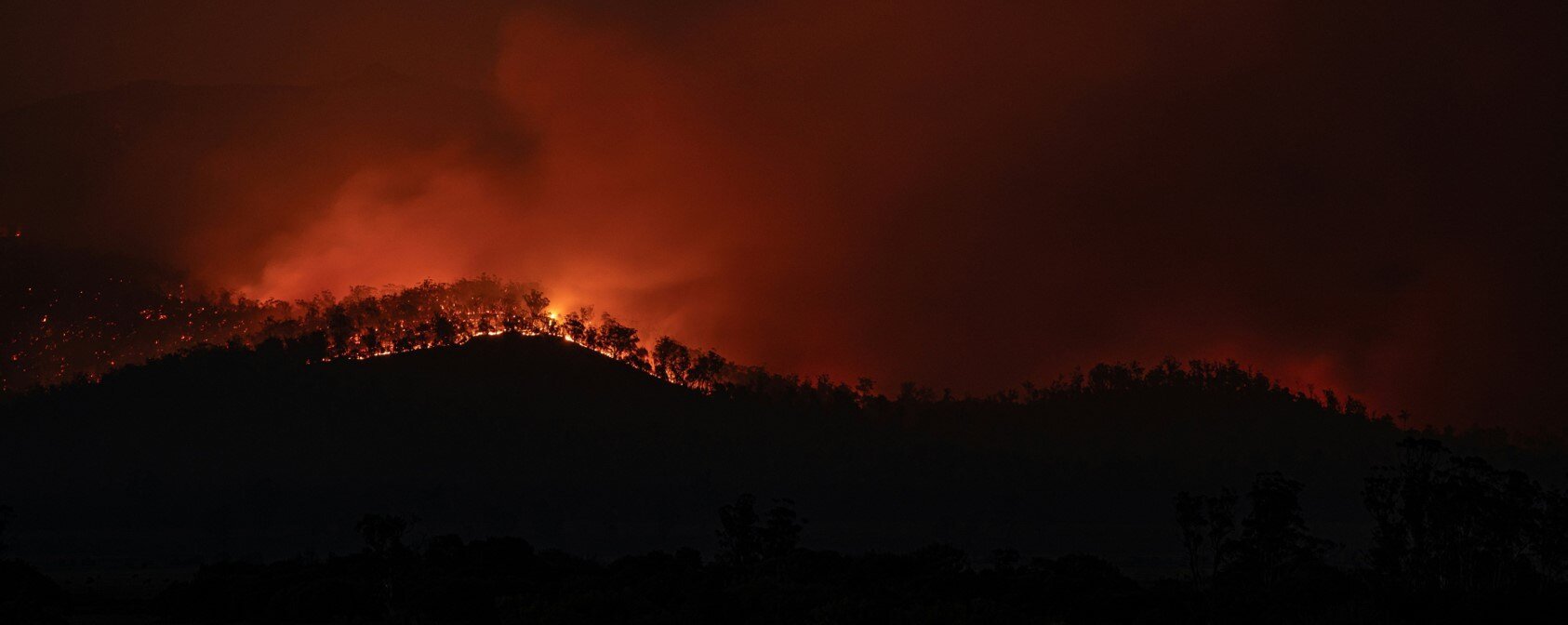The Living in Australia 2024: National Community Views Survey - Key Insights Report (DOWNLOAD HERE) draws on the views of the more than 5,000 people who participated in .id’s annual Living in Australia Community Views Survey collected across April and May 2024, and speaks to four themes we feel are critical to improving living standards across the nation.
Place plays an incredibly important role in shaping the community's views on climate change, how it is affecting our surroundings, and how prepared we feel to adapt. As we increasingly confront the realities of climate change, it’s clear that the local perspective is just as crucial as national or global outlooks.
The Growing Consensus on Climate Change
Over the past decade, belief in climate change has steadily evolved. According to research from CSIRO conducted between 2010 and 2014, around 80% of Australians acknowledged the existence of climate change. Fast forward to 2024, and this number has grown to around nine in ten (91%).
However, there remains some disagreement over its causes. While nearly half of Australians (46%) believe climate change is mostly or entirely caused by human activity, 30% think it is a mix of human and natural causes, and 9% attribute it mostly to natural causes.
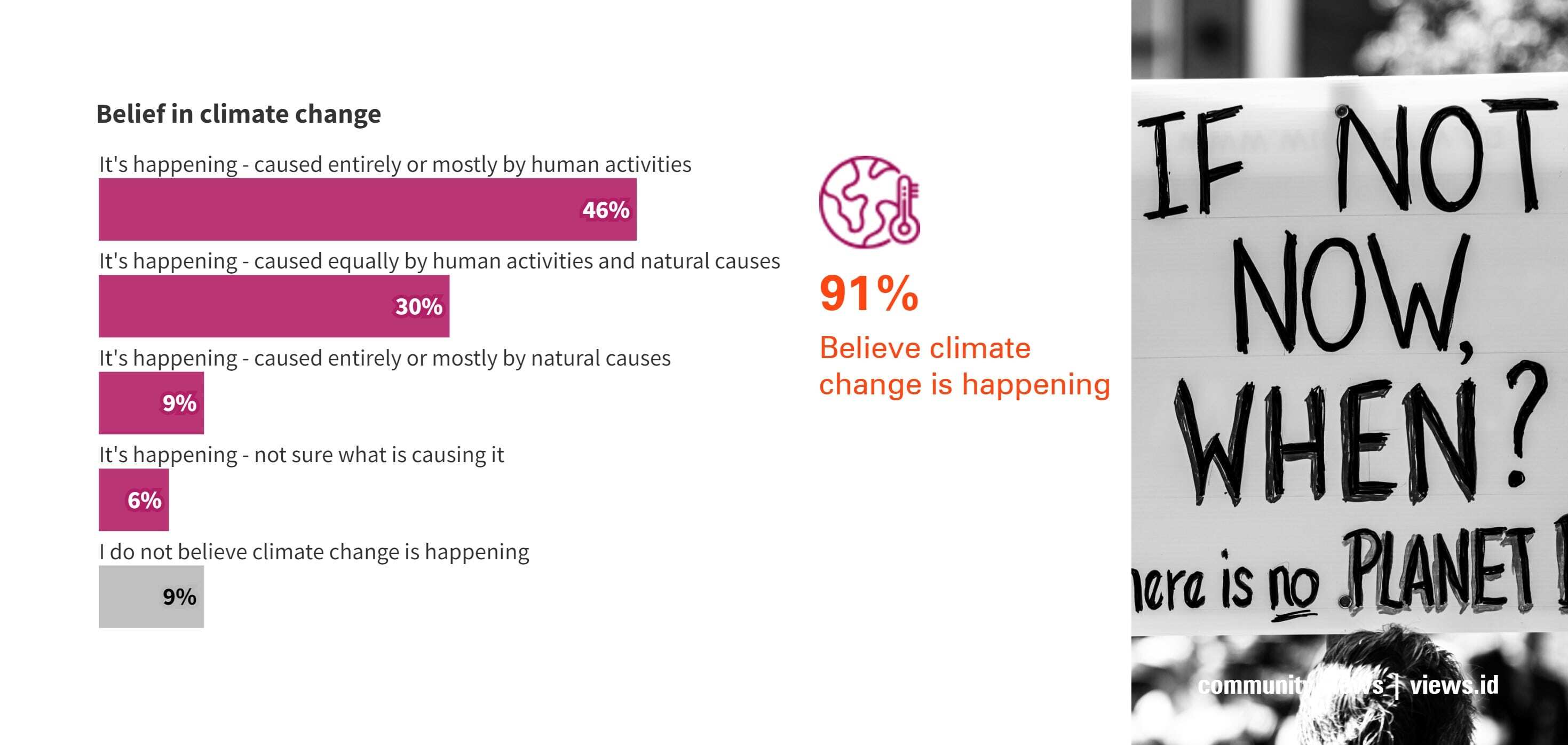
Belief in climate change tends to be stronger among younger populations. As many as 95% of Australians aged 18-34 believe that climate change is happening, and they are also more likely to attribute it to human activity.
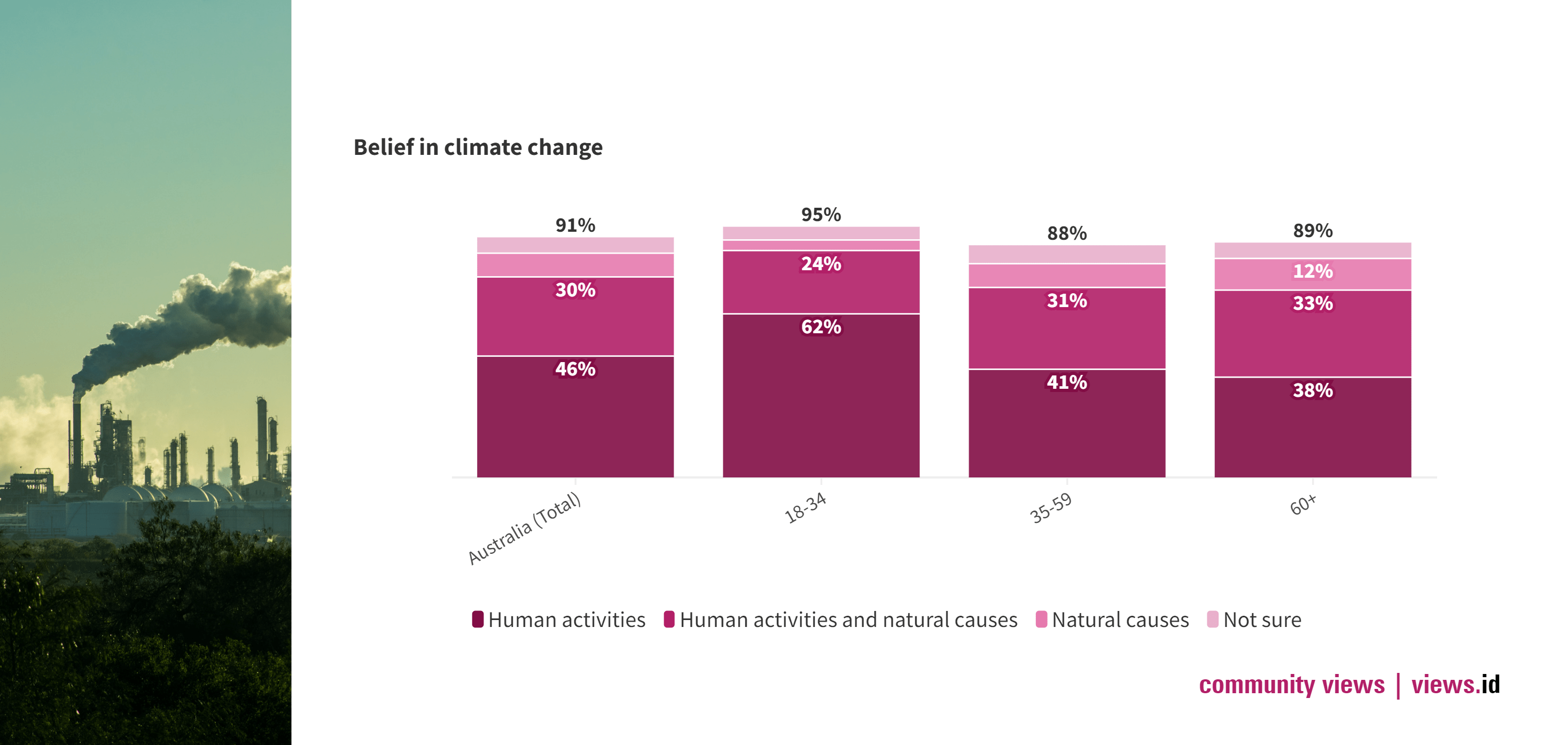
In the Inner City, 94% of residents believe in climate change, and 58% believe it is primarily caused by humans. On the other hand, in regional communities, 84% acknowledge climate change, though a larger portion believes it results from natural causes.
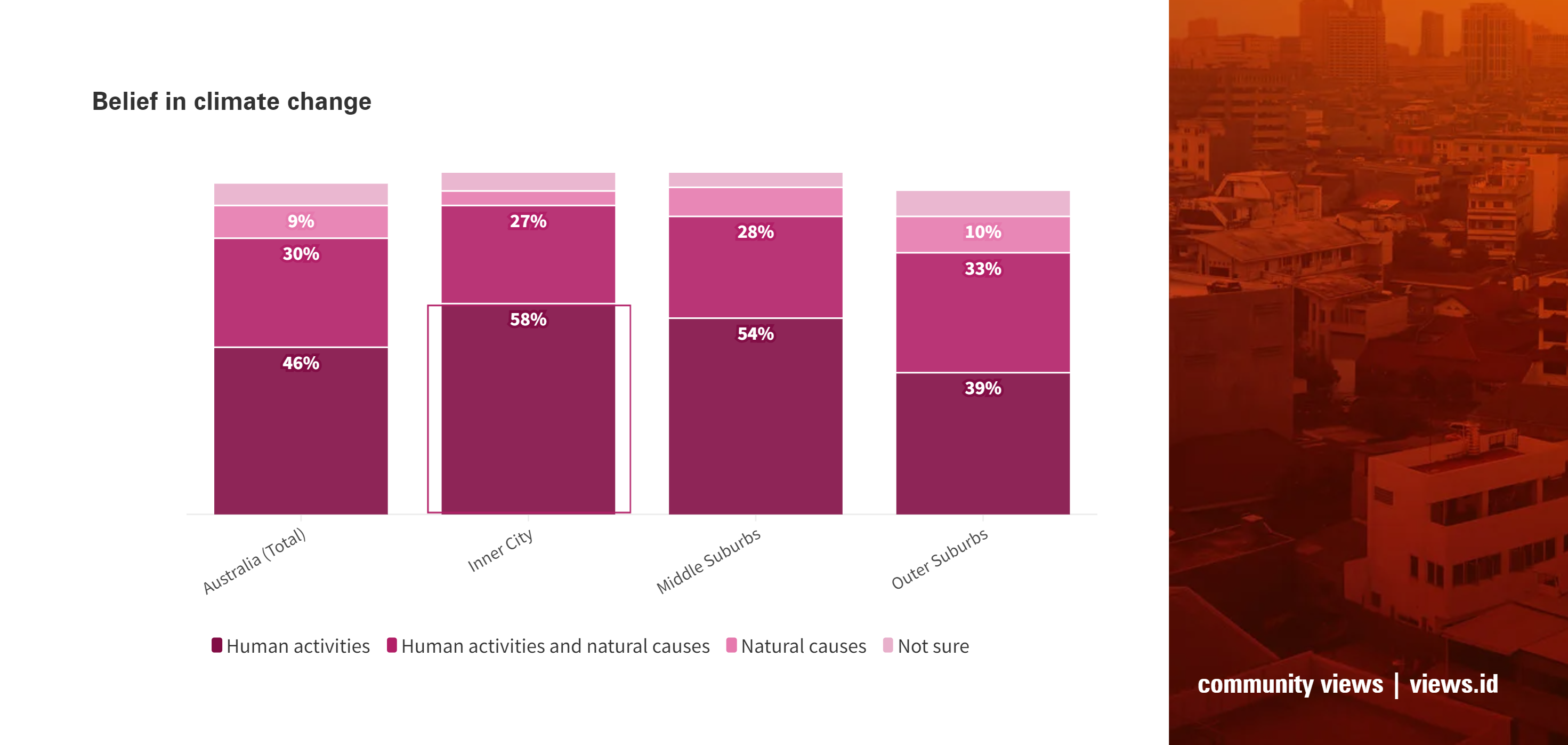
This regional variation has real implications for climate policy and energy transition efforts. Understanding these local differences is critical, especially in rural and regional areas where energy transition projects and infrastructure will be implemented. The economic makeup and specific environmental vulnerabilities of these areas will shape their responses to the climate crisis.
The Local Impact of Climate Change
Among those who believe in climate change, 45% report that their local area is already feeling its effects, with an additional 40% expecting it to experience impacts during their lifetime. Regional communities are more likely to say that their areas are already experiencing climate-related effects (50%), compared to metropolitan regions (43%).
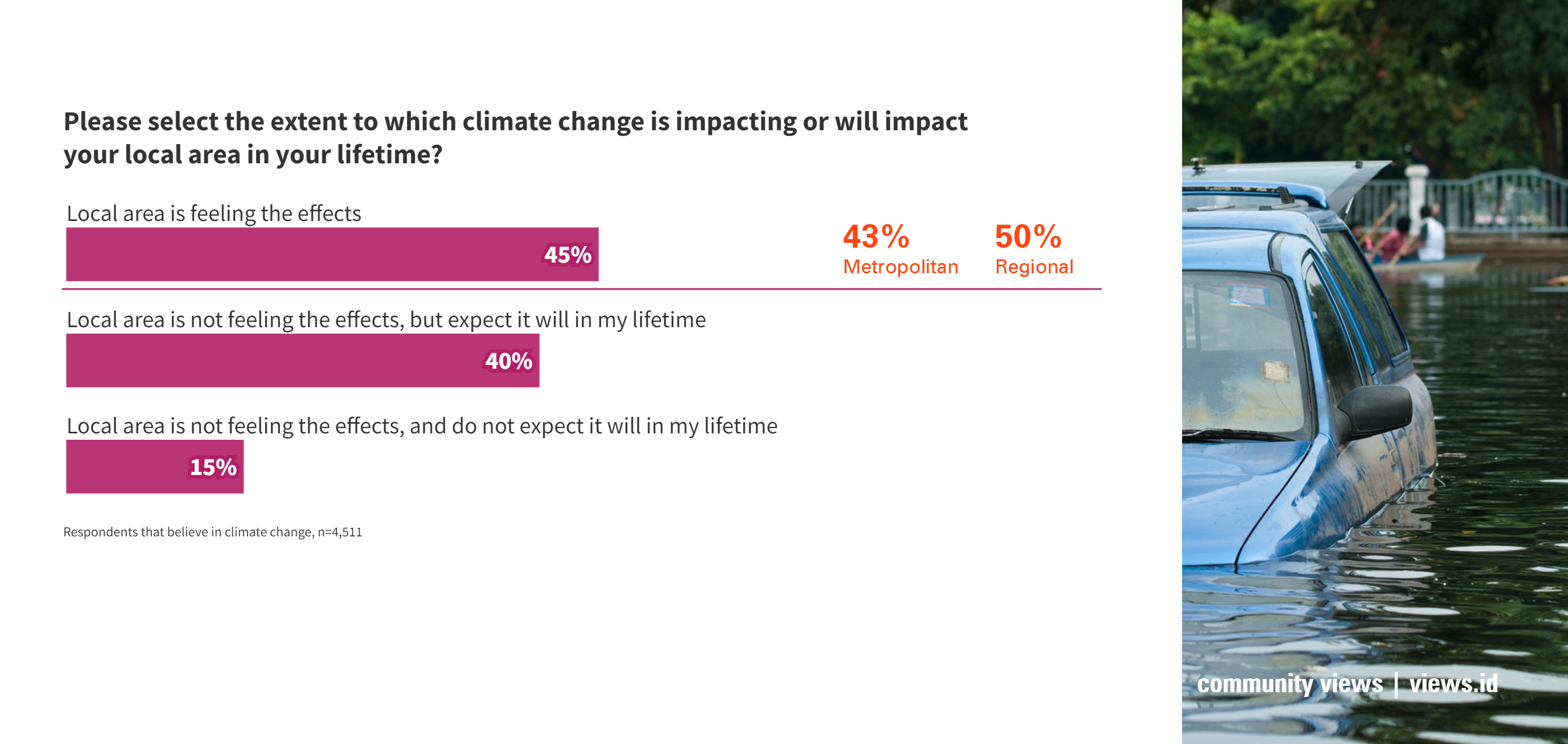
However, while Australians recognise the seriousness of the issue, there is some uncertainty about their local areas’ ability to adapt. The Living in Australia survey found that while 44% of Australians are confident in their area’s ability to adjust to climate change, a larger portion—52%—expressed doubt. This suggests that while we acknowledge the problem, there is widespread concern about the resilience of our infrastructure and local communities in the face of extreme weather events.
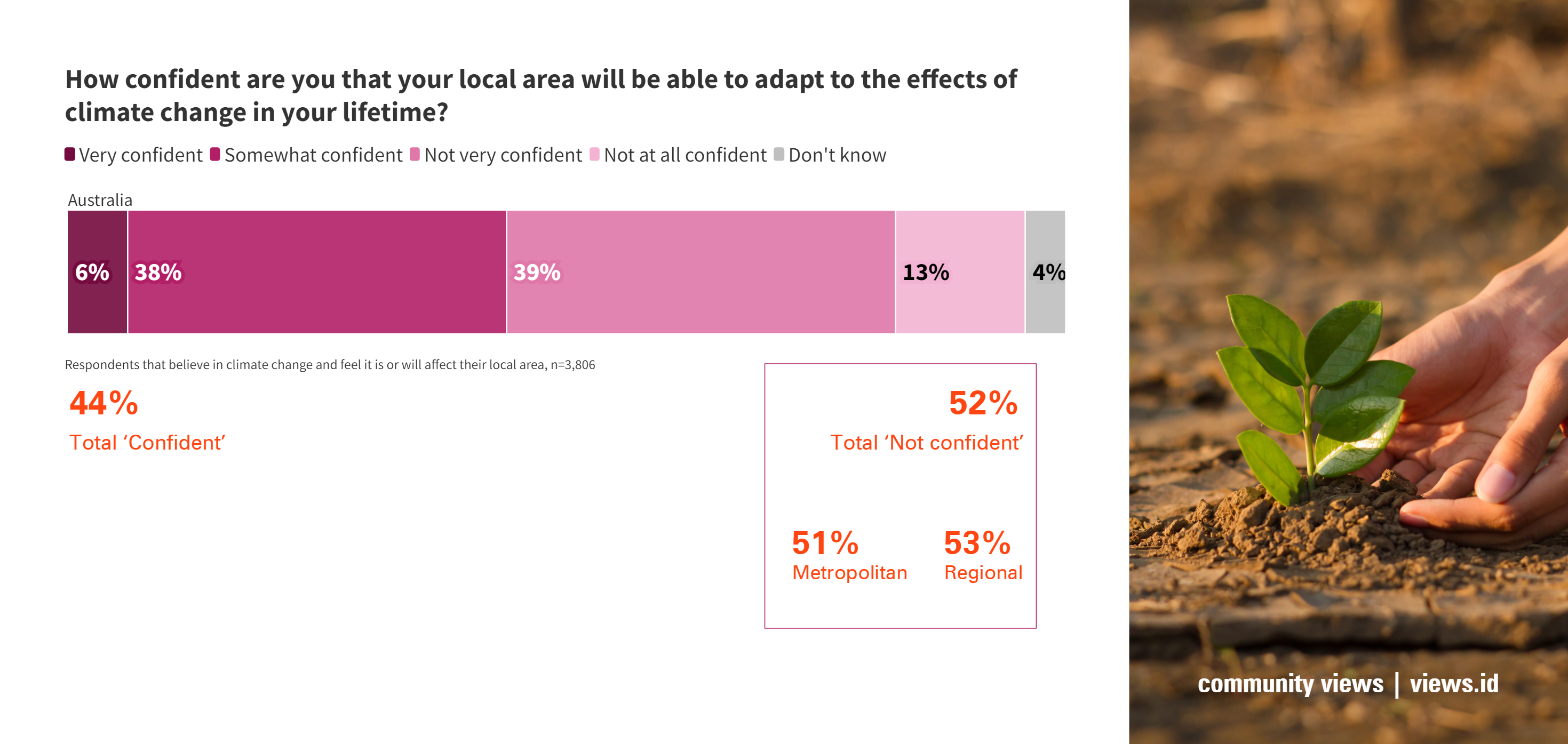
Extreme Heat: The Top Climate Concern
With about 85% of Australia’s population living in urban areas, it’s no surprise that extreme heat tops the list of expected climate impacts. In metropolitan areas, 79% of people anticipate that their local area will be affected by extreme heat, and this number rises to 90% in the Inner City. This is particularly relevant as rising temperatures continue to impact daily life, infrastructure, and even public health.
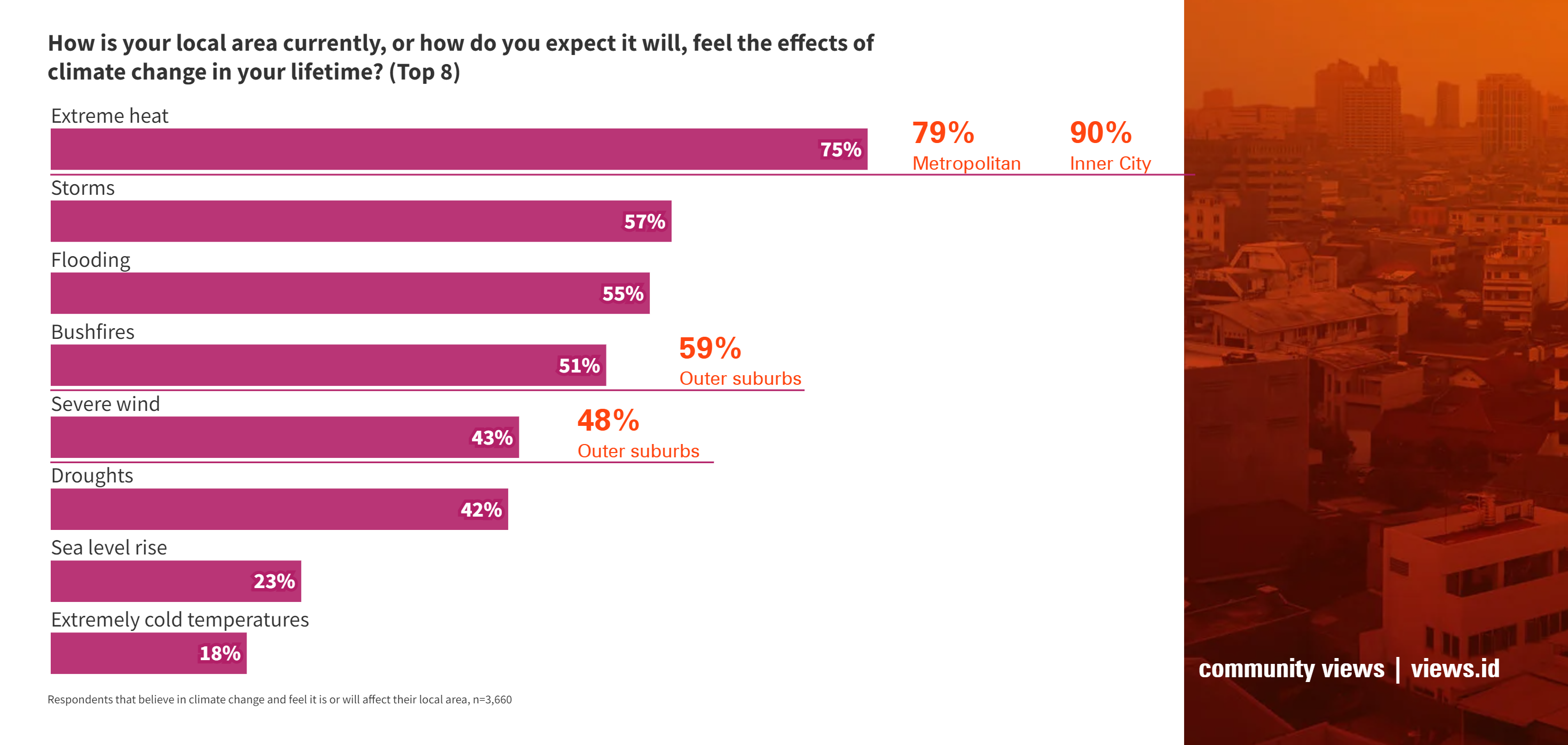
Residents of different regions of Australia feel vulnerable to varying climate-related challenges. For example, residents along the western seaboard, including Perth and regional Western Australia, cite extreme heat as their main concern, with over eight in ten expecting it to impact their local area. In Eastern Victoria, the devastating bushfires of Black Summer (2019-2020) heightened concerns about fire risk. Meanwhile, communities in Northern New South Wales, especially in the Northern Rivers region, are particularly worried about flooding after experiencing unprecedented flood events in recent years.
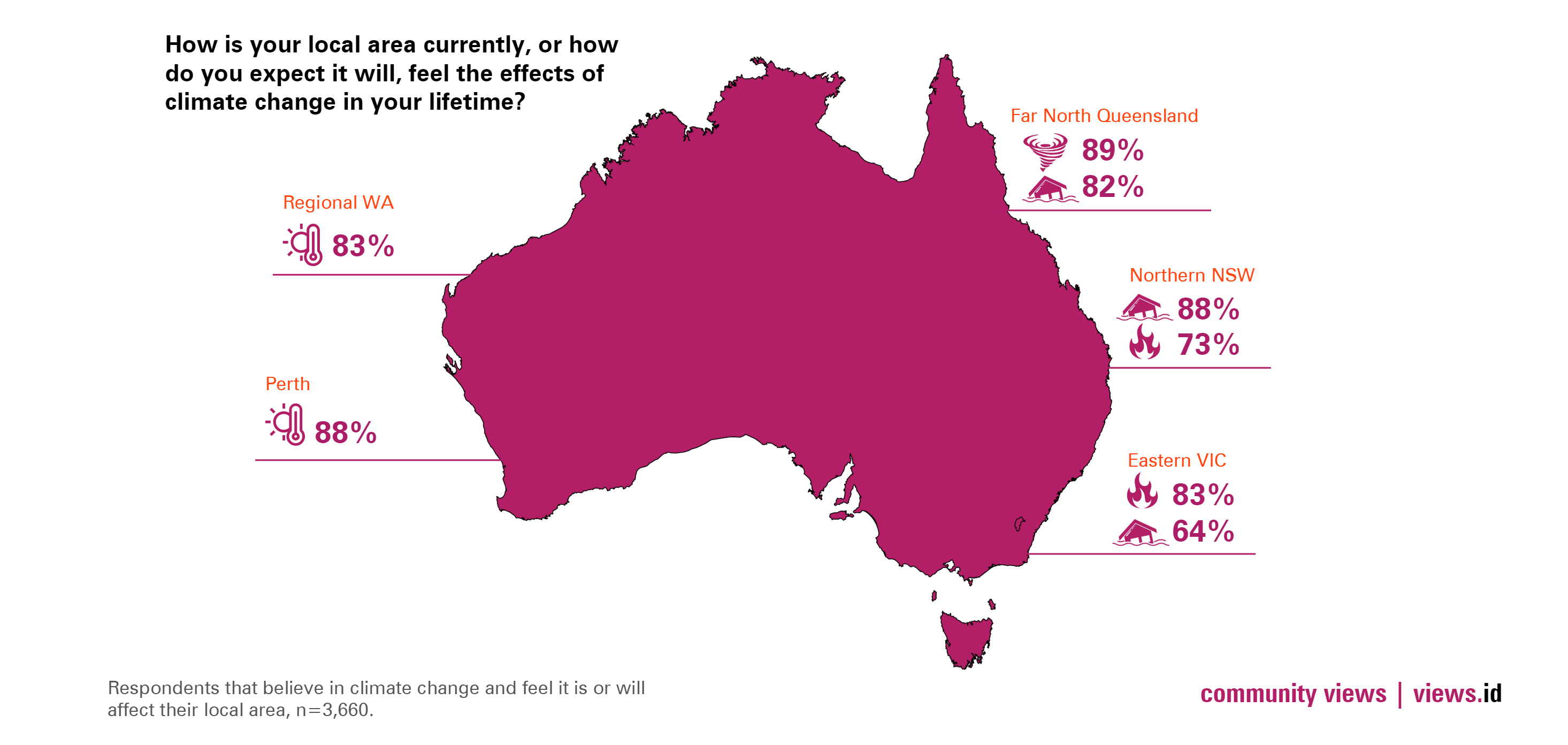
The Personal Impact of Climate Change
Seven in ten Australians who believe in climate change feel that it will reduce their quality of life in some way.
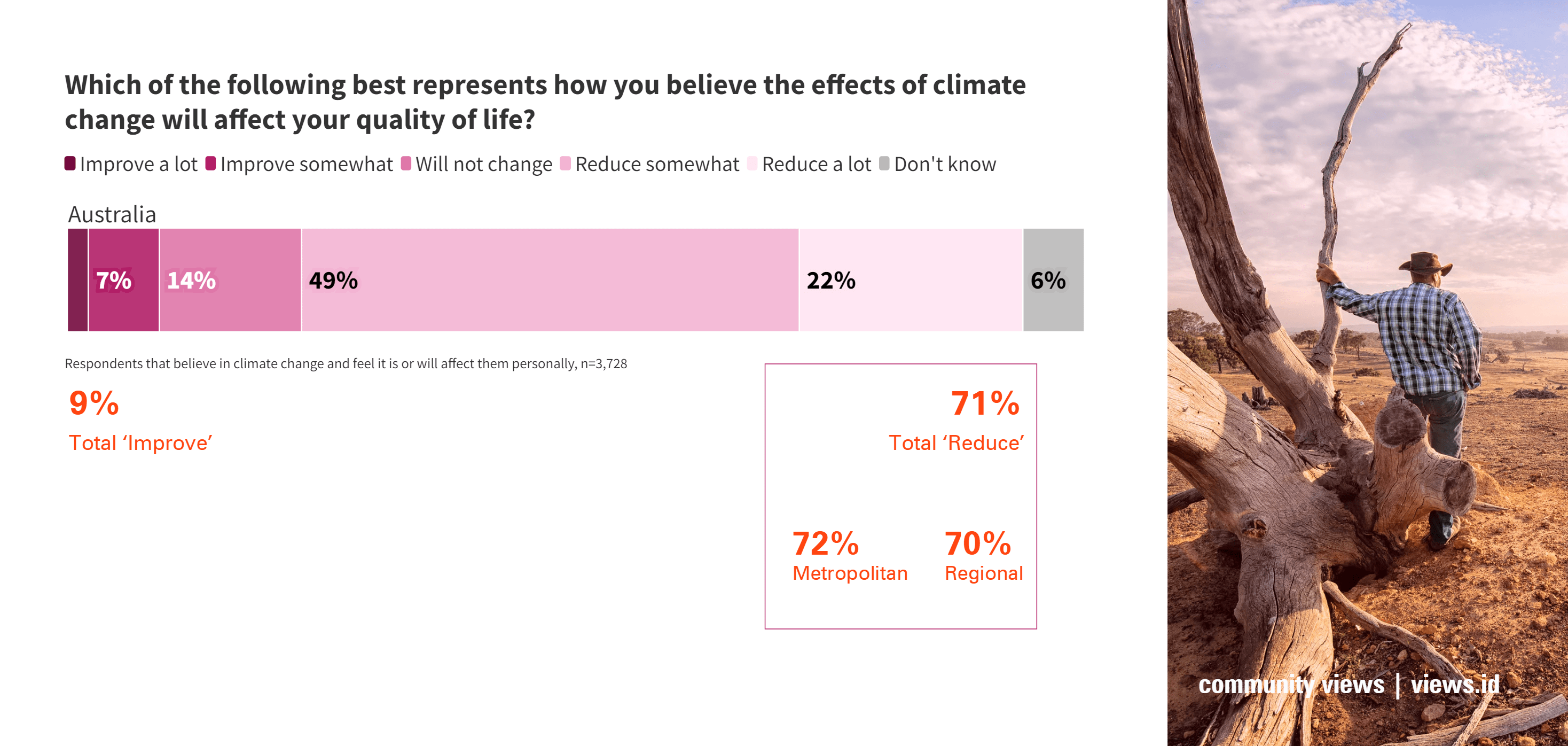
The main concerns revolve around rising household costs—particularly for energy, water, and insurance—as well as increased prices for food due to disruptions in agricultural industries. Cost of living is closely linked to the impacts of climate change, with higher prices for everyday items such as fruits, vegetables, and dairy products becoming an increasing concern for households.
The Role of Local Government in Building Resilience
Given their close connection to communities, local governments are uniquely positioned to help residents, businesses, and other levels of government address the challenges of climate change. Local governments can play a crucial role in ensuring that climate action policies reflect the specific needs and concerns of their communities. When residents see their priorities addressed in policies, they are more likely to feel heard, support their elected representatives, and take an active role in contributing to positive change.
Conclusion
Australia’s response to climate change must be informed by local perspectives, with a deep understanding of the unique challenges faced by different regions. From extreme heat in urban areas to flooding in regional communities, the impacts of climate change will vary across the country. By engaging with local concerns and ensuring that policies reflect the specific needs of each community, we can build more resilient, adaptable areas that are better prepared for the future challenges posed by climate change.
If you’d like to learn more about how the Community Views Service helps a diverse and growing number of councils and other organisations credibly, comprehensively and efficiently represent and monitor their community’s views and needs in strategic planning and advocacy, our services page provides a simple overview, answers frequently asked questions and includes links to other helpful information.











